Devoted to the Aligoté grape only, Bouzeron is by far the most unique of all the Appellations of the Côte Chalonnaise. In fact of all Burgundy, given that like practically no other wine region on Earth, Burgundy is dominated by two cultivars, Chardonnay and Pinot Noir (the only other place in Burgundy besides Bouzeron where those two grapes don’t rule is the Appellation of Saint-Bris, planted to Sauvignon Blanc and Sauvignon Gris). It follows that with all its Aligoté and nothing else, Bouzeron represents an absolute anomaly. And if that wasn’t enough for at least some kind of bragging rights, it turns out Bouzeron’s Aligoté, known as Aligoté Doré, differs in significant ways from the (little) Aligoté that is planted here and there in the rest of Burgundy (or the world, for that matter). Add that the wines of Bouzeron are generally blessed with a real sense of refinement and imbued with lovely white stone fruit and floral nuances enlivened by a racy minerality, and it follows that Bouzeron has plenty to offer any wine lover seriously worthy of his or her spittoon.
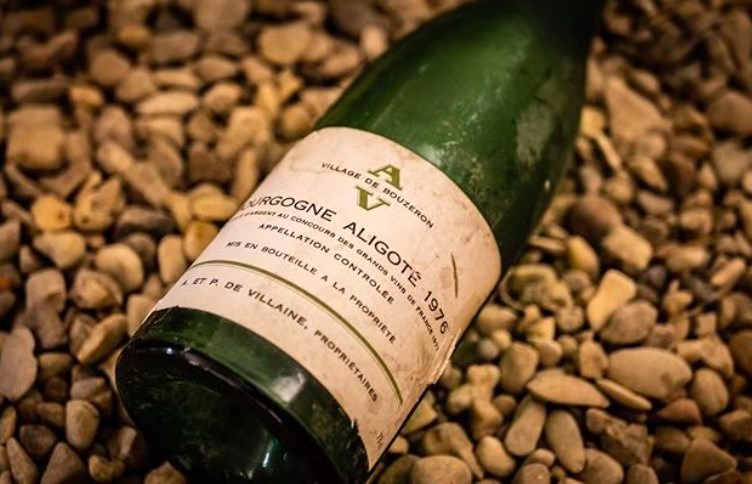
Unfortunately, the charming little town of Bouzeron and its wines have not yet garnered the fame and recognition that they deserve. This is partly because Bouzeron is located down in the Côte Chalonnaise, due south of Burgundy’s holy dyad of the Côte de Nuits and the Côte de Beaune. Not just Bouzeron in fact, but all of the the Côte Chalonnaise is a somewhat forgotten part of Burgundy, one that gets periodically “rediscovered” only to then be immediately forgotten by those very same people who had boasted proudly of having rediscovered it (so just imagine just how little aware of Bouzeron and the Côte Chalonnaise are all those individuals who hadn’t or haven’t rediscovered them to begin with).
A little bit of history
The Bouzeron Appellation boasts two towns, Bouzeron and Chassey-le-Camp, both of which go back far in time. The name of Bouzeron is cited in documents dating back to as early as 835 AD (when the name Boserontis is mentioned in the records of the Abbey of Saint-Marcel-lès-Chalon, founded in 590 AD by the Benedictines). This is a word of German descent, but its origin most likely derives either from the Latin word locus, meaning place, or from the family name or name of the owner of a local property, in this case most likely a certain Boserontis (for back in those days it was common for a specific place to take its name or be named outright after the name of the local owner). Later, in 1225-26, it is the name of “Boseron” that appears in the Cartulary of another abbey, the Abbey of Mazières. As for Chassey-le-Camp, the other town in the Bouzeron Appellation besides Bouzeron iself, it was founded in 1281 and was for the longest time simply called Chassey; but in 1946, its name was changed to the longer one in use today in honour of a famous camp located on its outskirts and dating back to Prehistoric times. Rather impressively, given the town’s small size, Chassey-le-Camp gave its name to that of Chasséen culture, the archaeological culture of prehistoric France of the late Neolithic (or in simpler words, the Stone Age) that dates back to roughly between 4500 B.C. and 3500 B.C. In Auguste Bessey’s 1912 book Le village de Bouzeron, ses collines, son camp retranchen on the village of Bouzeron’s history, there is a map of the camp’s architectural plan and layout (drawn in 1907 by Pigneret, then an assistant civil engineer in Chagny). Much earlier, Chassey le-Camp was reportedly known by the name of Petrus or Pierre de Chassey, its names possibly deriving from Cassiuacus or Cassiu-acus, or “the fundus of Cassius” or the “domain of Cassius” (Cassius being a very common ancient Roman name for males, so that is believed that the town was born where there used to be an estate once owned by a Roman (or a Gaul that had become a Roman citizen) who went by that name.
There is a great value in history, for history does not only provide general information on the realities of the past, but also serves to place the value of a place and its products in a proper context for the following generations who have no way of knowing what those ancient times were like or all about. For if Bouzeron and its wines are not as well-known as they might be or could be today, it wasn’t always like that. And that in itself tells us something. Apparently, in the Middle Ages the wine of Bouzeron was much sought after by locals and wine lovers from elsewhere. Bessey, in his aforementioned book on the village of Bouzeron’s history, reported that at that time “the wine of Bousseron” was used as a sacramental wine by all the communities belonging to the Abbey of Saint Marcel. Furthermore, that there was a perception of viticultural value associated with Bouzeron and its immediate surroundings is more than likely, given it was an area of clos (walled vineyards). These clos were created by the monks of Cluny as early as the eleventh century (and more clos still were built by the members of the Saint Marcel Abbey of Chalon). Already in the eleventh century, the Abbott Courtépée, in his 1731 Description du Duché de Bourgogne, mentions Bouzeron along with some of Burgundy’s most prestigious vineyards, describing its wines as “dry yet delicate, with roundness and finesse”. So why did Bouzeron and the Côte Chalonnaise fade into the background in more modern times? Part of the reason was undoubtedly the area’s cold weather prior to the advent of modern-day climate change: in that day and time, grapes had trouble reaching full optimal ripeness in the Côte Chalonnaise, and so wines tended to be, more often than not, thin and tart (and this was quite true even of more famous parts of Burgundy where Pinot Noir, until only recently, rarely if ever achieved full optimal ripeness; in fact, the practice of chaptalization – legal in France and a necessity in most of the country’s winemaking areas- has always been widespread in Burgundy). Another reason is that because of the low value associated with its wines, the Côte Chalonnaise suffered mightily at the hands of phylloxera. Simply put, once the area’s vineyards were destroyed by the infernal louse, there really wasn’t much incentive to replant them given that the mostly local markets for the wines had completely dried up. Nowadays the situation is altogether different, and it is not unrealistic, or wishful thinking, to believe that the future looks bright for the wines of Bouzeron and those of many (if not all) other parts of the Côte Chalonnaise. Quite differently from centuries past, there exists today a wine-buying public genuinely interested in diversity and local produce: this means, for example, that the totally unique Aligoté wines of Bouzeron now hold an interest factor that they lacked in centuries past (when wine was mostly viewed either as a source of calories or as simple everyday quaffing liquid). Add to that the increasingly exorbitant modern-day prices of white and red wines from Burgundy’s most famous Appellations, and it cannot surprise that wines that taste good, are fairly priced, and have high intellectual value because of their uniqueness (such as those of Bouzeron) are now becoming increasingly popular.
The Bouzeron Appellation and its terroir
Roughly forty-six to forty-eight kilometers long and eight to ten kilometers wide, the Côte Chalonnaise is made up of one semi-regional Appellation created in 1990, the Bourgogne-Côte Chalonnaise (a geographical subdivision of the generic Bourgogne Appellation created for the red and white wines of the Saône-et-Loire department believed to be of higher quality than those simply labeled as Bourgogne), and five Appellations Villages. Moving from north to south, these are Bouzeron, Rully, Mercurey, Givry, and Montagny. Bouzeron, an Appellation d’Origine Contrôlée created as such in 1997 (thanks to the strong work of Aubert de Villaine), is the first one you reach moving south from Beaune (Bouzeron is located only about twenty kilometers away from Beaune; at the same time, I want to point out how it’s also only about five kilometers from the world-famous vineyards of Chassagne-Montrachet in the Côte de Beaune).
Three things are most important to remember about Bouzeron and its wines: 1) that it is an Aligoté-only Appellation (so you will find no Bouzeron red wines); 2) that it grows a very special kind of Aligoté, known as Aligoté Doré, a quiet different grapevine from the more common Aligoté Vert of the rest of Burgundy and the world; and 3) that all of Bouzeron’s vineyards are found high on the slopes, and not in the flatland below, a stark difference with the Côte d’Or, where land value and the high prices fetched by wines boasting that hallowed name on the label have pushed people to plant grapes everywhere, even in the plains and on the windy hillside summits that are undoubtedly less suited to making especially high quality wines (and should therefore probably not benefit from the Villages monicker, but should rather carry the less prestigious generic Bourgogne label).
Bouzeron produces roughly 2500 hectoliters of wine a year of Aligoté wines. As such, the Appellation takes the name we know it by today only in 1998 (its wines were previously called Bourgogne Aligoté de Bouzeron). In fact, local producers have the option to name their wine as Bouzeron or as Bourgogne Aligoté, the latter a category that allows higher yields. To be clear, Aligoté is not the only grape variety planted in vineyards there: Chardonnay and Pinot Noir also grow in Bouzeron, mostly in the lower, warmer and clay-rich sections of the Appellation’s slopes, and their wines sold as either Bourgogne-Côte Chalonnaise or Coteaux Bourguignons (as stated previously wines labeled Bouzeron can only be made with Aligoté; Chardonnay and Pinot Noir cannot be used to make Bouzeron wine and so are bottled with dfferent wine names). Geographically and topographically, Bouzeron’s lay of the land is akin to a tongue-like extension sitting in between the Montagne de l’Ermitage to the west and the Montagne de la Folie to the east. Its vineyards are found mostly on the two slopes that face each other, such that they lie on the western side of the Montagne de La Folie and the eastern one of the Montagne de l’Ermitage. These two slopes are both planted to vineyards but are characterized by very diverse habitats explaining the differences between the wines made on each one. In the past, it was the eastern exposures that were thought to be the best, as they allowed for the best amount of illumination and heat. Today, with the advent of climate change, the western-facing vineyards have gained in popularity, because given the lower temperatures, they guarantee more freshness in the wines. Some of Bouzeron’s more famous climats like La Fortune, l’Ermitage (or l’Hermitage) and others, are east-facing and are marked by large doses of sunlight, but unfortunately many vineyard owners there have chosen to plant clonal selections of Aligoté that are neither the most qualitative nor the most adapted to that specific terroir. In fact, some of Bouzeron’s best vineyards today are those facing west, especially in the case of those specific plots that have been planted to massal selections of Aligoté that have adapted over the decades to the specific local Bouzeron habitat. In other words, in Bouzeron we have a curious situation that amounts to the historically best eastern-facing sites (ideal for they allow Aligoté to ripen fully), having unfortunately been planted to lower quality clonal selections of the grape variety, while the western-facing sites that were once less sought after (because the variety needs plenty of sunlight to ripen fully) are now in many respects the better ones not just because of climate change (in and of itself an example of a less than ideal man-induced modification of terroir) but because they have been planted with higher-quality massal selections. Such is life.
A climat is a climat is a climat
The Bouzeron Appellation covers the territories of the towns of Bouzeron and Chassy-le-Camp, and its wines can be labeled only as “Bouzeron”; in other words, there are no village-designations or official crus (in this respect, it is interesting to note that Pierre de Benoist, who runs Domaine de Villaine and is the Président de l’Appellation Bouzeron, has launched a series of study groups to study the geology, history and quality of the wines of Bouzeron, to verify which if any of Bouzeron’s climats could aspire to a premier cru status, but it is clearly a long process that will require much time, effort and work still in order to generate results credible enough so as to be agreed upon). Though there are fifty-two hectares planted to Aligoté in Bouzeron, in fact the Appellation itself is much larger. The entierety of the Bouzeron Appellation actually extends over roughly 161 hectares (or more precisely, 160 hectares, 97 ares and 55 centiares, where one hectare is equivalent to 10,000 square meters, an are -or ahre in French- is 100 square meters, and a centiare is one square meter); of these, 160 hectares, 52 ares and 58 centiaires belong to the Bouzeron township proper, and 0.44 hectares -or 44 ares- and 97 centiaires are associated with Chassey-le-Camp. There are thirteen climats associated with the town of Bouzeron proper. In alphabetical order, these are: En Rabeutelot (5.53 ha), La Digoine (5.3 ha), Le Bois de Foret (2.9 ha), Le Bourg (8.74 ha), Le Champ des Crots (5.36 ha), Le Feulin (5.71 ha), Les Bouchines (6.82 ha), Les Boyottes (8.74 ha), Les Cordères (9.1 ha), Les Fias (4.63 ha), Les Louères (5.5 ha), Les Seurées (4.15 ha), and Vers le Petiti Puis (4.22 ha). However, the Bouzeron Appellation on the whole also contains one climat in the township of Chassey-le-Camp as well, called Les Hauts du Bois (0.45 ha). Throughout the Appellation, soils are mostly brownish clay-limestone on a Bajocian bedrock or white marls over an Oxfordian limestone mother rock.
Bouzeron’s most famous vineyard areas include Le Clos de l’Ermitage (or l’Hermitage), La Digoine, Les Clous, La Fortune (or Clous Aimé) all facing to the east and characterized by generally shallow soils formed during the Jurassic Period (which dates back to 201-145 Million years ago, though different sources report slightly different numbers; please note that a period refers to a specific geological temporal moment and should not be exchanged for other terms such as “epoch” and “era”, in that they refer to other specific temporal moments different than those of a “period”). The top part of the slopes is where most of the aforementioned Oxfordian white marls (a mix of limestone and clay not dissimilar to that of parts of Corton-Charlemagne) are found, and Aligoté does well there, as it does at mid-slope. In fact, the same climat can be planted to different varieties, distributed within its confines according to where it can ripen best: for example, in La Fortune and other climats that have soils ideally suited to Aligoté, Chardonnay and Pinot Noir, one finds Aligoté at in the middle and high up on the slope, Pinot Noir on the chalkier soils towards the bottom (where so much chalk is present that this soil was used to make glass in the past), and Chardonnay at the top of the slope where the soil is mostly marly in nature.
Looking over the various climats of Bouzeron and the wines they are associated with, specifics about the wines are hard to come by because few if any of the local vignerons bottle from one single climat only. Le Clos de l’Ermitage (surrounded by walls, the word “ermitage” was spelled with an initial “h” until the nineteenth century, but this later changed and the “h” was dropped, though some still write the name with the “h” in place); it is, for some locals at least, perhaps the most famous Bouzeron climat of all, though I have found over the years that opinions on the matter are understandably varied. Certainly, Les Clous can make a similar boast; according to Aubert de Villaine, it too was most likely a walled vineyard. In fact, the world “clous” is believed to derive from that of “clos”, meaning a walled vineyard, a very strong suggestion of its high viticultural quality (this is because only the best vineyards were historically walled, as, logically enough, there was no need to protect the grapevines of a site that gave average or poor wine wine, and hence did not have much value). Similarly, the name of the Sous les Clous climat refers most likely to the wall of the Les Clous. According to Sylvain Pithiot, another famous name in Burgundy, many other of the Bouzeron climats also have names linked to local topographical or natural landmarks. For example, Le Bois de Foret was already mentioned in an 1827 land register, so this would seem to imply that the area had some agricultural value attached to it (there are also a number of other Bouzeron climats carrying the word bois in their name, such as Sous le Bois, either because they were forested or are situated nearby forests, but that don’t seem to have the same historical prominence). Les Boyottes has the -otte suffix which is rare in Burgundy, but was used elsewhere, such as in the South of France, to designate fallow land (and thereby perhaps hinting to the poor viticultural potential of this specific climat’s area. Not surprising then is that Le Feulin, a climat situated right next to Les Boyottes is generally reputed to be the coldest spot in all Bouzeron, which would certainly allow us to infer that it was most likely not a place of high viticultural successes either. Les Corcelles is a very ancient climat, in that it was already mentioned in documents dating back to 1202 (from the Latin cortis, or farm), so that would lead one to surmise it was considered to have some agricultural value. La Digoine is an outstanding climat that lies at the foothills of the Ermitage mountain and is named after the spring that flows there. Similarly, right near La Digoine, the En Raubetelot climat also refers to water flowing there (raubetelée means just that; and raubetelot’s suffix of “ot” is an ancient spelling of eau, or water.) In fact, the spring that gives the name to La Digoine flows between it and En Raubetelot. Les Fias on the Montagne de la Folie side of Bouzeron is stony and cold, its name probably signifying a beech grove (from the Latin fagea). Not surprisingly given its name, La Fortune is one of the most beautiful and highly thought of climats: southeast facing, its name means “good luck”; further attesting to its potential high quality is that it is believed it was also another of the area’s walled vineyards. Just below, and a clear-cut indicator of just how all-pervasive and important the concept of terroir is and always has been in Burgundy, one finds another climat, La Basse Fortune where the soil is viticulturally less qualitative than that of the La Fortune (much like the distinction between Mazis-Chambertin’s Mazis-du-Haut and Mazis-du-Bas, though not everyone believes the two sections of Mazis-Chambertin give wiens of widely divergent quality). Les Fremisots just above Les Corcelles is a cold place where the sun shines late in the day (the name fremisots most likley deriving from fremiz or fromer (donkey). Les Louères (derived from louvière, or the area of wolves), located between Les Bouchines and Le Champ de Crots, may have been heavily forested once and home to packs of wolves.
Bouzeron’s grape variety and wines
Aligoté is a semi-aromatic variety related to Sauvignon Blanc, and like it, can showcase both an opulent side and one that is far more austere and mineral. It can be argued that the truly great Aligoté wines of this world are those that successfully display both sides of the cultivar’s personality, but in my experience, it is hard to get that equilibrium just right. It is in fact much easier to find Aligoté wines that are either fat and blowsy, even bordering on the oxidative and those (the vast majority) that are high acid, tart, very lemony wines. Most importantly, and differently from elsewhere, in Bouzeron it is easy to latch onto an exceptionally good Aligoté wine. This is due to a variety of factors.
First, the generally extremely poor Oxfordian marls rich in limestone supress Aligoté’s natural high-yielding tendencies and proclivity to produce a lot of grapes, reining in its vigour. This is why in Bouzeron, Aligoté is planted mostly at the top of the slopes or just below, while lower-lying clay-rich sections of the slopes are reserved for Chardonnay and Pinot Noir.
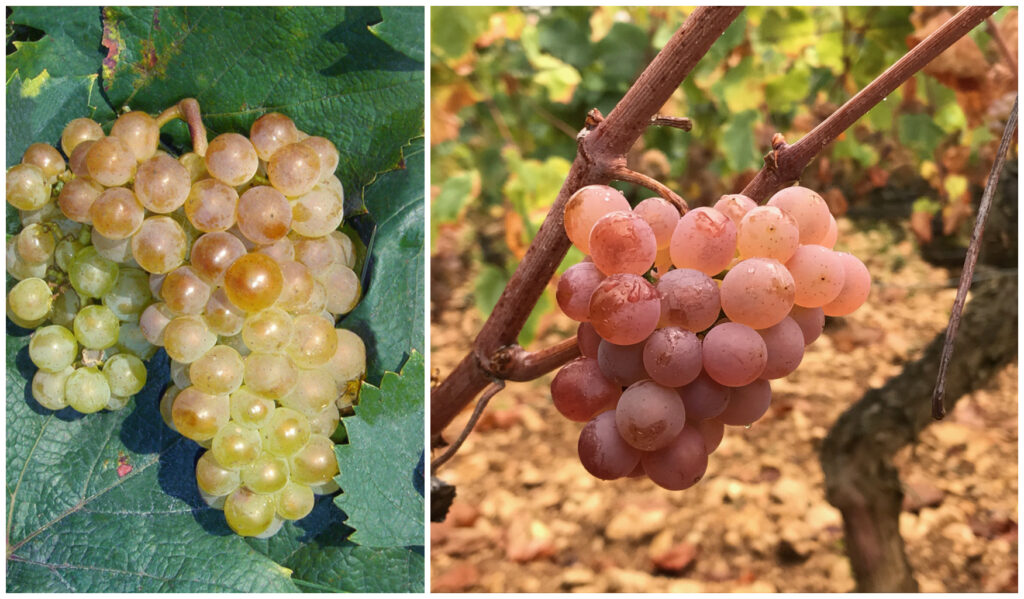
Second, the specific Bouzeron biotype of Aligoté, known as Aligoté Doré, is more aromatic and lower-yielding than the Aligoté Vert of the rest of Burgundy and the world. Aligoté Doré also appears to have the capacity to give wines of greater texture and depth than Aligoté Vert, combining in the best wines opulence and elegance. In truth, whether Aligoté Doré and Vert are biotypes of one variety that have emerged by adaptation to different habitats over centuries or whether they are distinct varieties is still open to question.
Unfortunately, there has been precious little research looking into the matter I am still not sure myself of where the truth lies. For sure, scientific studies of note are lacking; the ones I have seen and read come mostly from Romania, and not from France, and as viticultural realities between the two are different, I’m not sure how much of the available data is applicable to Bouzeron. Over the last few years, I have talked to countless local Bouzeron vignerons and researchers, and have really not had much luck in drumming up scientific information of any note. In fact, most people start talking to me about Chardonnay, which seems slightly self-defeating and hardly an illuminated way of going about things given the unicity of Bouzeron’s Aligoté, but it is what it is.
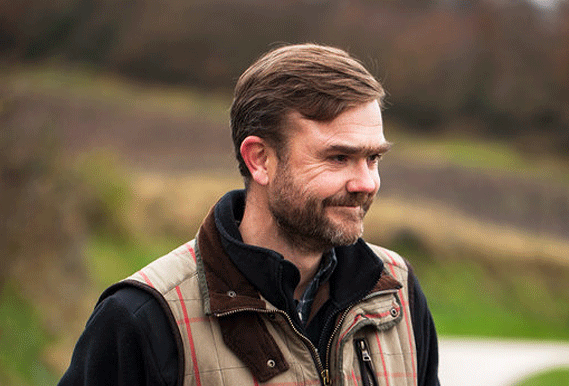
In this light, it is higly commendable that Pierre de Benoist, the man currently in charge of Domaine de Villaine, the benchmark Bouzeron wine estate, created and developed there a private nursery of Aligoté grapevines (from massal selections mostly obtained from his oldest vines) to further study the viticultural and winemaking behaviours of these Aligoté grapevines. This Aligoté Doré is especially important because given the extremely old age of the vines (some more than 100 years old), they represent a local biotype of Aligoté specifically adapted to the Bouzeron terroir, and therefore must not go lost. It is characterized by medium-sized, loosely-packed bunches and especially by rather large leaves (larger than the Aligoté average) which if on the one hand help protect the grapes from excessive sunlight, on the other hand acts as a block to the free circulation of air and poses a real risk for rot-related problems. This is why the locals have the habit of saying that their Aligoté, living happily in its relatively dark, dreamy, still world, “can rot from fright”. For sure, old massal selections of the local Aligoté offer the best results, compared to clonal selections that were developed not with Bouzeron specificity and uniqueness in mind (uniqueness of both the local grape variety and other Bouzeron terroir factors), but rather with the intention of producing a lot of wine, that would serve either as Bourgogne Aligoté or as a base wine for the Crémant de Bourgogne.
The Domaine de Villaine and its Bouzeron wine
The town of Bouzeron has been the home of Aubert de Villaine, co-director of Domaine de la Romanée-Conti ever since he took over at that property in 1971 and established his own small family domaine, the Domaine de Villaine (originally called Domaine A.et P. de Villaine, after Aubert & Pamela, Aubert’s wife). Only about eight hectares large when the de Villaine husband and wife team set up there, the domaine’s size has more than trebled in size over the years; since 2000, it is run very capably by Aubert’s nephew, Pierre de Benoist, who comes from a wine-making family, the Domaine du Nozay in Sancerre. Today the estate is about thirty hectares large (though not all the land is planted to grapevines, with forests and fields partly covering the grounds): under vine are 8,99 hectares (ha) planted to Aligoté; 4,26ha to Pinot Noir in Bouzeron; 3,18ha of Chardonnay also in Bouzeron; 1,62ha in Mercurey; 7,43ha of Chardonnay in 1e Cru in the Rully denomination; 2,56ha of Premier cru Pinot Noir vineyards also in Rully; and 0,40ha in Saint Aubin Premier Cru Chardonnay plots. All the Domaine’s vineyards are organically farmed, and certified as such by Qualité France back n 1986 (so no herbicides and pesticides, and the only fertilizer used is organic vegetal compost).
Pierre de Benoist has accumulated by now twenty-one years experience following and studying his Aligoté variety in both the vineyard and the cellar. His Aligoté Doré vines average 65 years of age, but the oldest are a whopping 115 years old, and is planted high up on the slopes in seventeen different parcels across nine different Bouzeron climats. The part about the slopes in an important point that de Benoist will repeat time and again: in Bouzeron, Aligoté is grown in high-quality vineyards planted on the slopes, while elsewhere in Burgundy it has been displaced from the best locations by Chardonnay and Pinot Noir. The Bouzeron climats in which the estate’s holdings are distributed are as follows: Fias (0,90ha), Corcelles Verger (0,4085ha), Corcelles plante (0,6331ha), Clous sous le bois (1,04ha), Digoine (0,94ha), Digoine Bonnet (0,50ha), Clous Aimé (0,6870ha), Fortune (0,63ha), Hermitage (1,98ha).
The Aligoté is planted at an altitude ranging between 250-310 meters above sea level on shallow soils, poor in nutrients and with plenty of marls, clay and limestone close to the surface. It is the combination of these factors that blesses Bouzeron wines with some age on them with a chalky character that makes them somewhat reminiscent of an old Champagne wine without bubbles. At the Domaine de Villaine, yields are low, up to 20% less than the maximum allowed for AOC rules, and each plot is vinified separately, in oak foudres the volume of which matches the production from each specific plot’s surface area. As all the plots are treated the same way and vinified in oak, De Benoist believes that each plot delivers its own specific nuance to the finished wine; and that the finished blend of the seventeen plots is always superior and better expresses what Bouzeron is all about as opposed to single-plot bottlings.
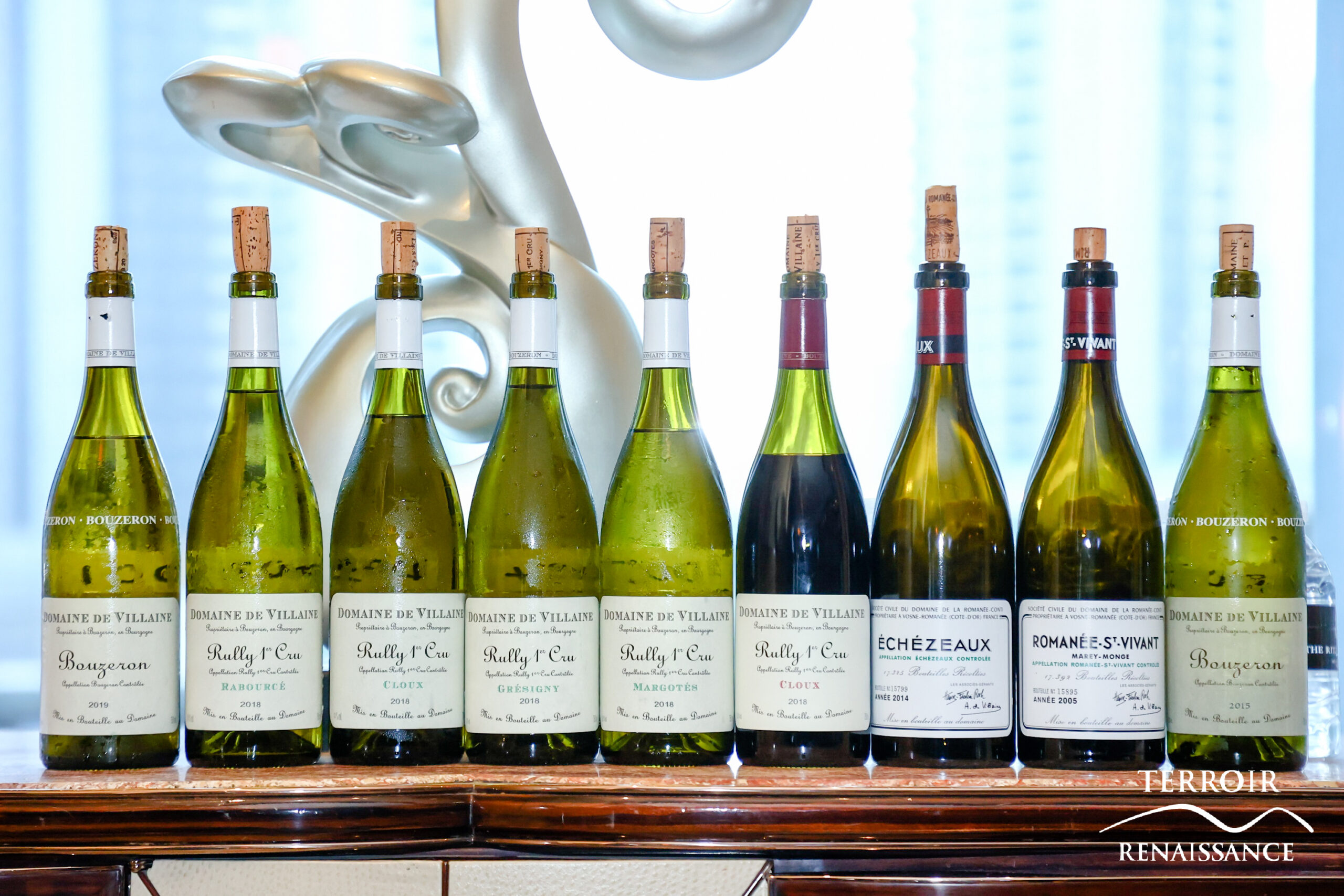
In general, the western-facing climats give wines that are much more mineral and acid-driven, even austere in their youth, while the eastern-facing sites give richer, more opulent wines. Not surprisingly, there are differences between the wines made within each climat, and not just in between those made in different Bouzeron climats. But according to de Benoist, this is mostly the result of differences in the ways the grapevines have been planted and have been farmed over the decades, rather than being the consequence of any intrinsic soil or topographical diversity (though of course we have no way of really knowing that, at least not until the vines are all planted and farmed in the same way). For example, some rows are Guyot-pruned and trained, others are cordon-spur, still others are bushvines (Gobelet), a mix that is the result of adapting the individual vine farming method to individual soil types. But even so, differences in the wines made from these single parcels are mostly limited to a matter of nuance: and to cite de Benoist, himself quoting the famous classical music composer Franz Liszt, “…les nuances sont tout” (nuances are everything). He does not declassify any of his Bouzeron wine.
De Benoist is one of Burgundy’s most engaging and insightful speakers and I cannot recommend enough listening to him any chance you get, and even better if you can get an appointment, to visit him at the estate. He is passionate about bringing forth knowledge about Aligoté and is extremely knowledgeable on the subject.
The vertical
Domaine de Villaine 2019 Bouzeron 95
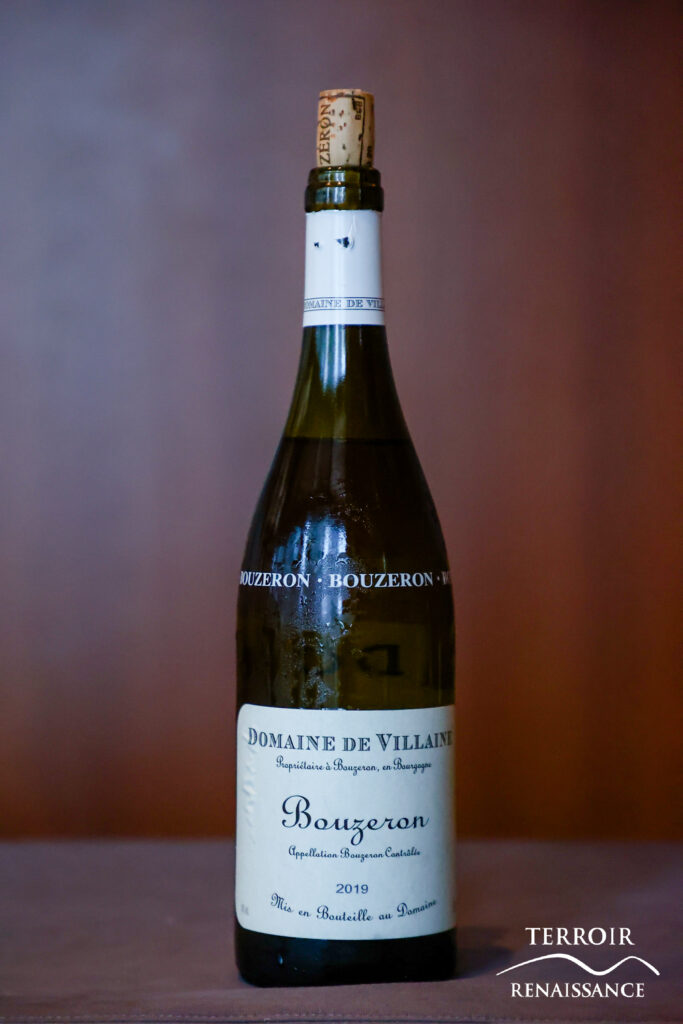
Pale green-tinged yellow. Captivating aromas of white stone fruit, lemon jelly, iodine, jasmine, verbena and powdered stone on the bright, pure, complex nose. Less powerful and rich than a top cru wine from Puligny or Meursault, but very precisely delineated, with terrific cut and clarity to its saline, fine-grained lemon, mineral and orchard fruit flavours. The close is wonderfully long and nuanced, with terrific subtle inner-mouth floral erfume. There is real density here, and this beauty manages to be rich without coming across as thick, always a neat trick that only true great wines are capable of. Thought this wine will last ten years without any difficulty, I would still drink it up within the next five or so in order to revel in its magical balance of freshness, laser-like but harmonious acidity and dainty fruit. To be crystal-clear, this is just an amazing white wine and about as good an Aligoté as you’ll ever drink, hence the fully-deserved very high score. Drinking window: now-2026.
Domaine de Villaine 2018 Bouzeron 93
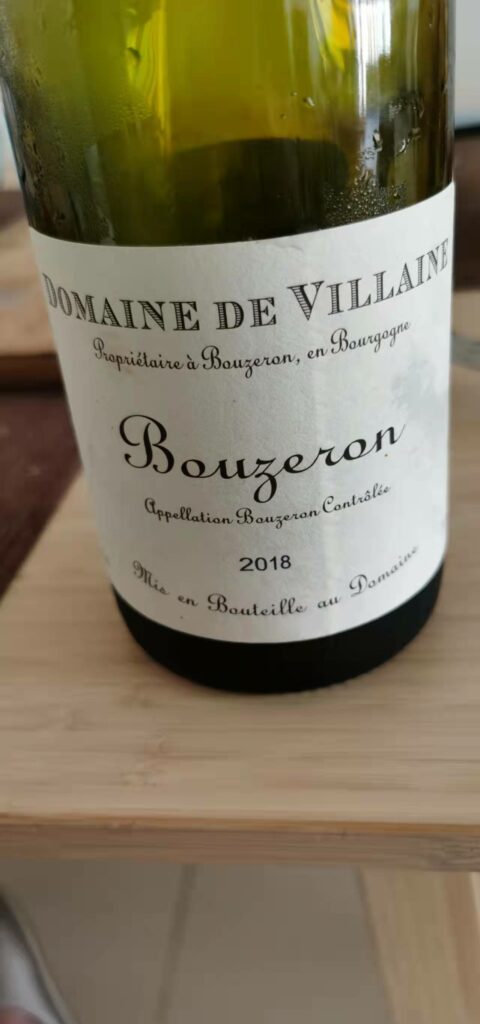
Good pale straw-yellow colour. Very pretty nose combines orange peel, quinine, ginger, musk and beeswax, along with more classic white peach and fresh citrus aromas. Slightly richer and showier than de Villaine’s 2019 and the 2017 Bouzerons at the present stage of development thanks to the relatively warmer year, but still very lively and lifted, this is easygoing, tactile and open-knit, and already displaying compelling glyceral sweetness and even a certain amount of sex appeal. The finish hints at wild herbs and is softer and rounder than usual for this wine though still high in acidity as is typical and ought to be expected of the Aligoté variety. Drinking window: now-2024.
Domaine de Villaine 2017 Bouzeron 91
Golden-tinged yellow. Restrained aromas of fresh apricot (more so than peach), pineapple and sweet spices, complicated by a lemony undertone; showed even riper stone fruit notes with aeration. Sweet, tactile and elegantly styled, with ripe acids nicely framing and lifting the intense orchard fruit and beeswax flavours. Finishes long and pure, with a chalky minerality and a lovely, almost fat texture (by Aligoté’s slightly austere standards) and noteworthy pliancy. Racy but accessible, this is one de Villaine wine I would drink up sooner rather than later. Drinking window: now-2022.
Domaine de Villaine 2016 Bouzeron 93
Luminous straw yellow with a green tinge. Aromas of white flowers and fresh citrus dominate, but complemented by hints of stone fruits, hazelnut and iodine. At once suave but bright in the mouth, broad and open-knit but also lifted by a steely mineral spine, there’s sneaky concentration to the ripe but lifted yellow fruit flavours. Nicely accessible, but this ought to still evolve slowly in the bottle. Drinking window: now-2025.
Domaine de Villaine 2015 Bouzeron 90
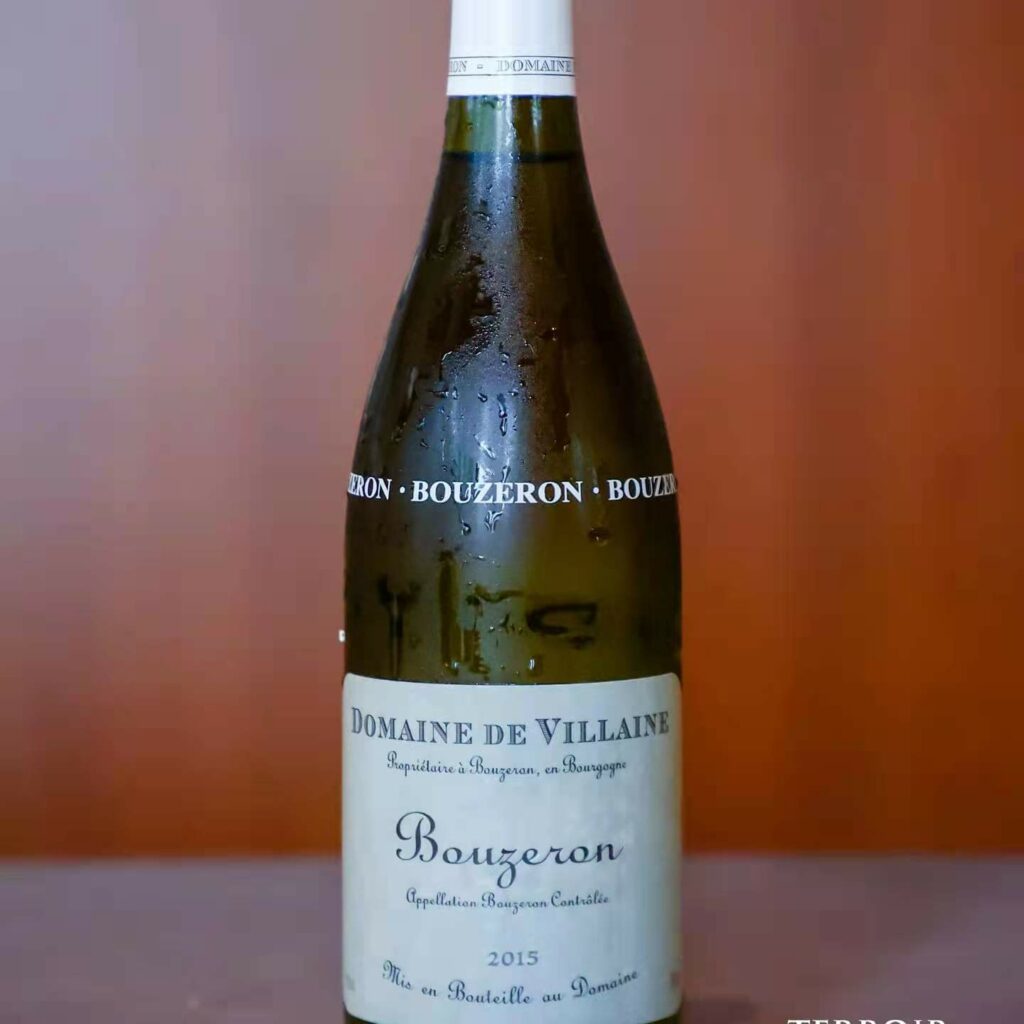
Green yellow-gold. Pure aromas of lime peel, sweet almond paste, butter, custard cream and minerals, marred by a slightly oxidated note. Very open, suave and downright fat fro a Bouzeron, this fine-grained wine showcases the oily, almost opulent texture that Bouzeron wines with a little age can bring forth. A note of lime oil adds interest on the long, classy back end. Those who prefer fatter Meursaults to steely Chablis will love this. Drinking window: now.

 中文
中文
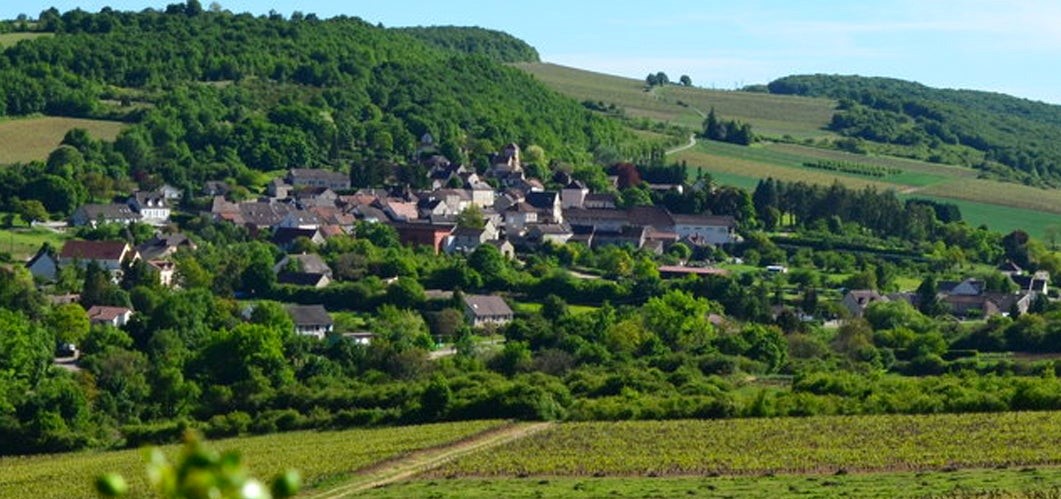
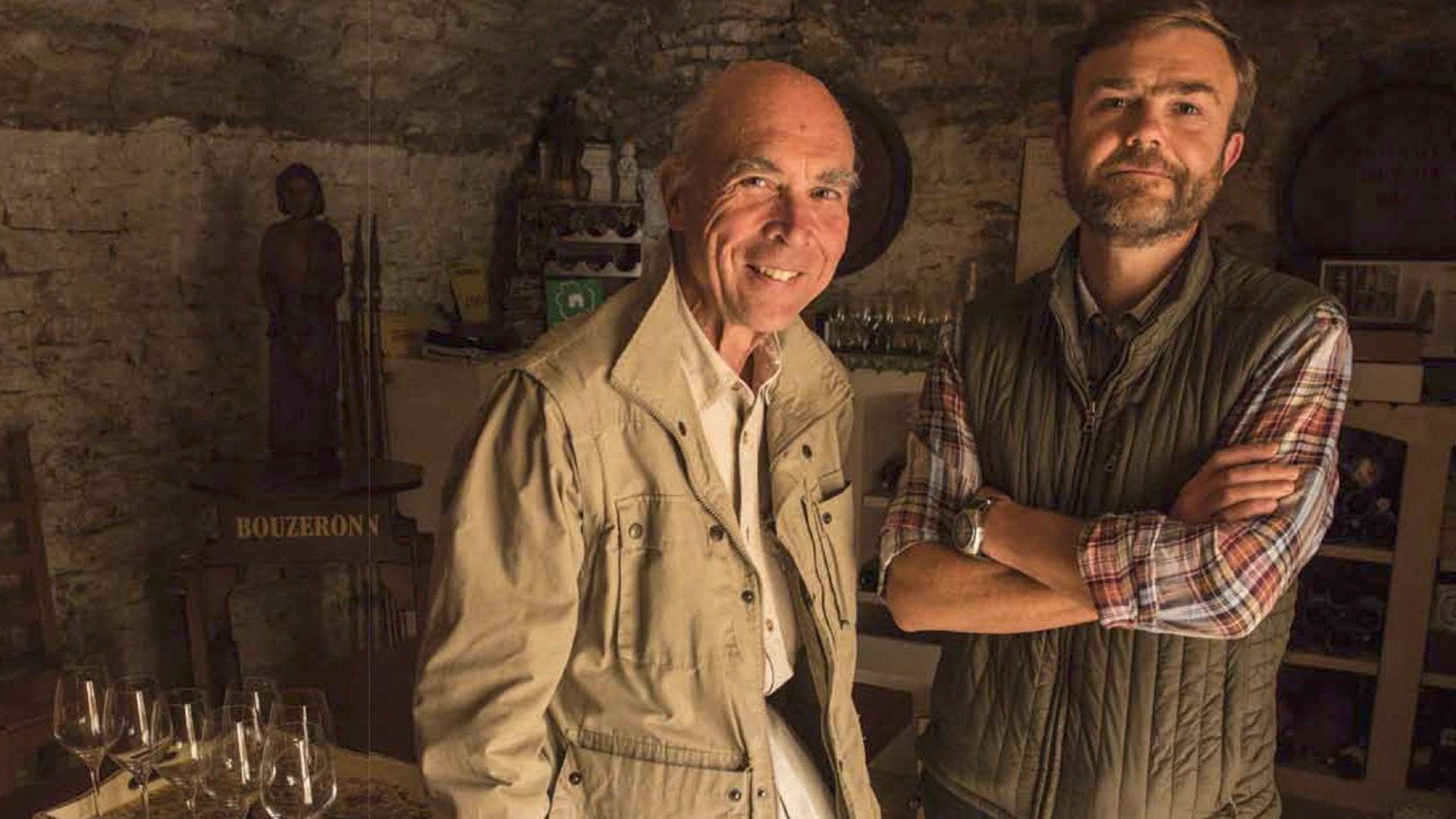
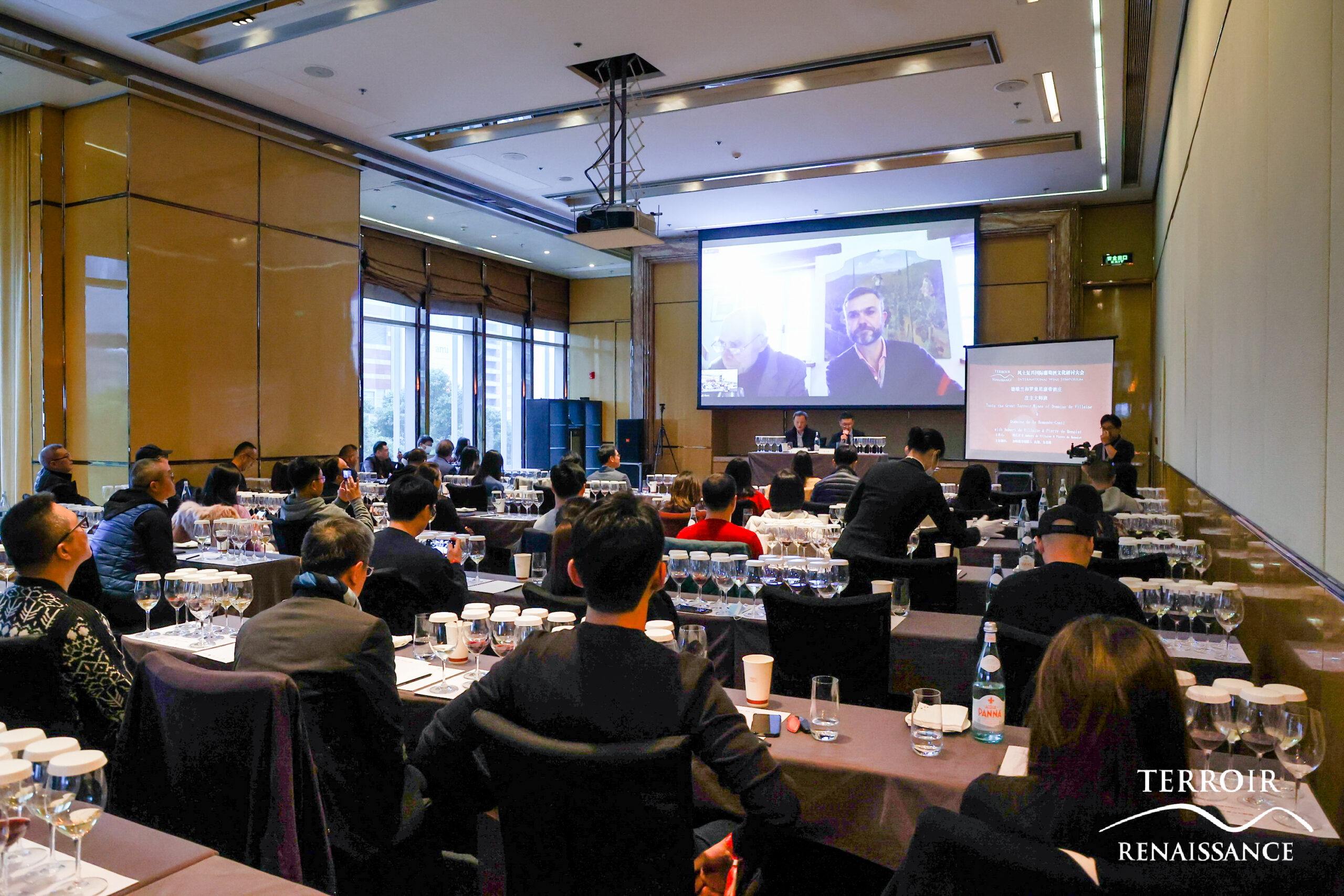




[…] are the Aligoté Doré planted in Bouzeron, which are today felt to produce superior wines (see Ian D’Agata’s article: Understanding Bouzeron, Its Terroir, And the Great Wines of Domaine de Vi…). But he notes that the grapes are clearly golden at harvest, like those of Aligoté Dorée, […]
Great info! It was a very good in-depth look.
Thanks, glad you liked it, we have gotten some good feedback so that helps me better understand what our readers are looking for. We really do aim to make this as useful and as interesting a website for all of you out there.
BTW, I have another very similar piece coming up on Rully, so look if you enjoyed this one on Buzeron, look for that one this June!
ian